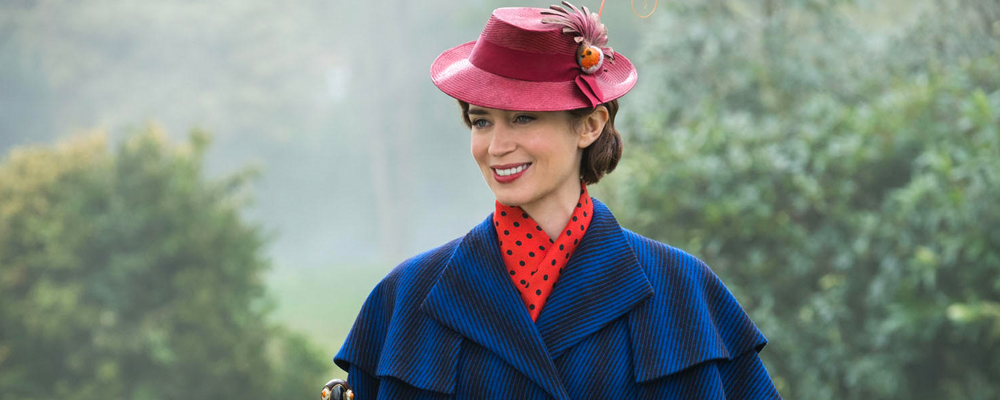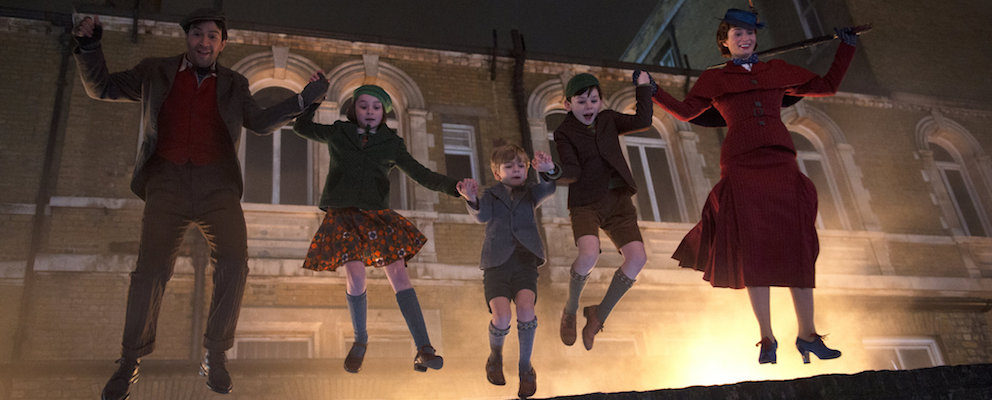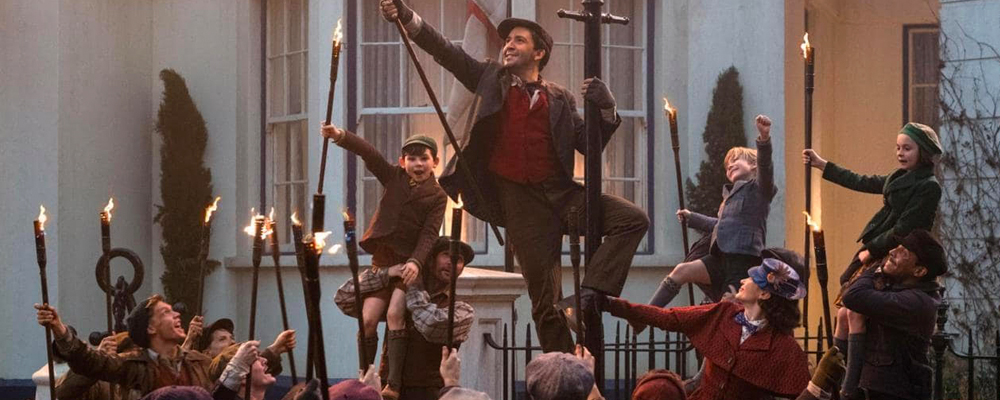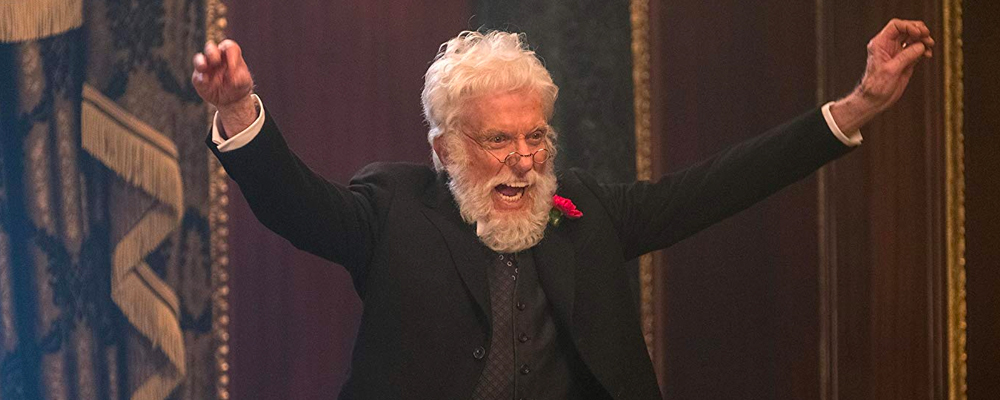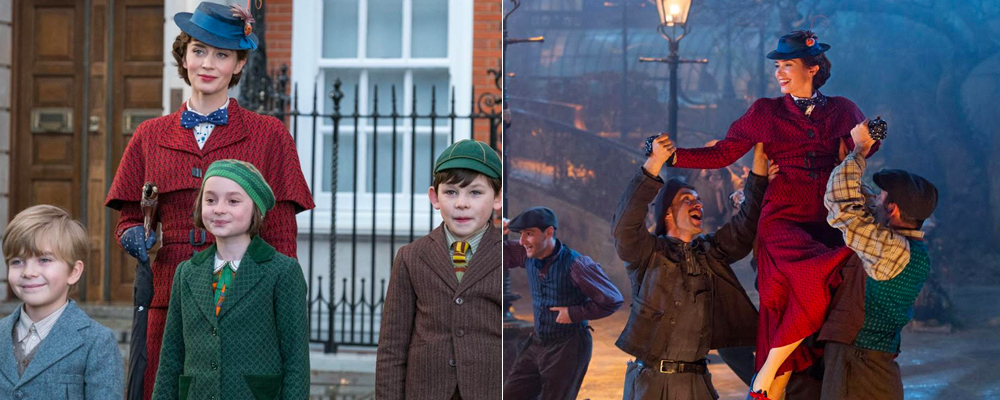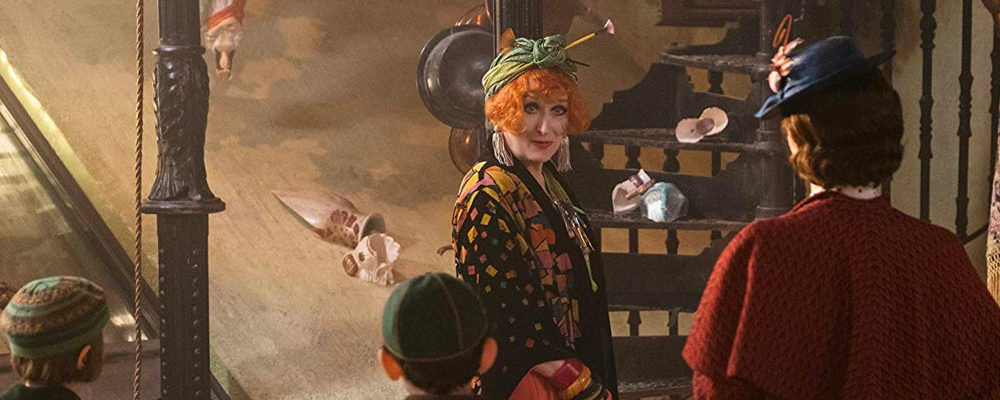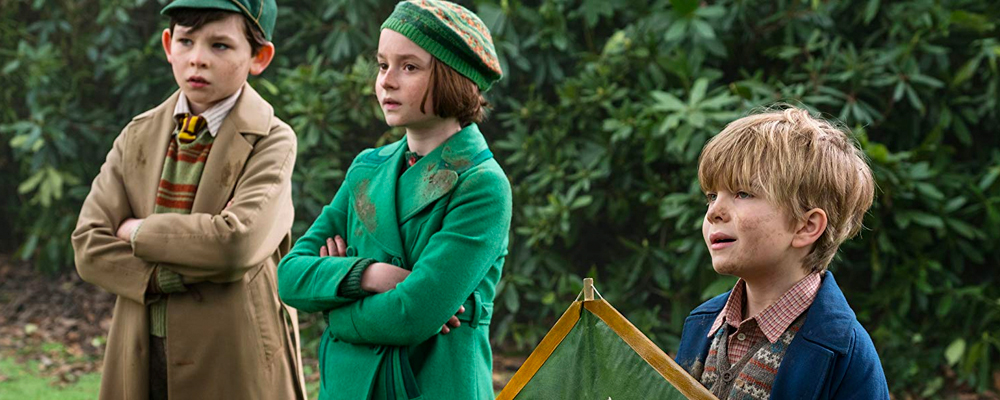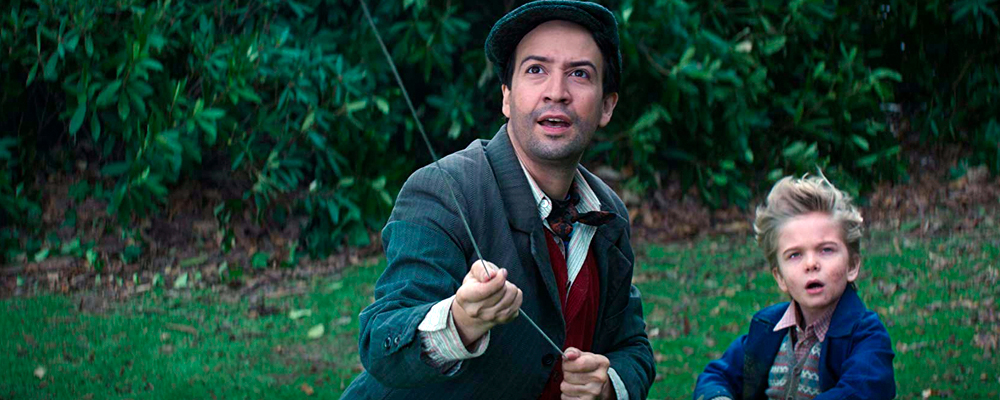‘Mary Poppins Returns’ Is a Fun, Nostalgic Ride
Michael Amundsen
With a film as archetypal as Disney’s first Mary Poppins movie, a remake can be a challenge. The question is how to create something worthy enough to stand on its own, while honoring a much beloved classic. Though not quite as magical as the original, “Mary Poppins Returns” is still a fun and delightful return to the marvelous world of that no-nonsense nanny who is practically perfect in every way.
Jane and Michael Banks (Emily Mortimer and Ben Whishaw) are now adults. Though she is single, Jane follows in her mother’s footsteps as a political activist. Michael is a recent widower, left alone to raise three children on his own. Forced to take a low level clerkship in the same bank where his father worked, Michael has little talent for business. Living in the old Banks house, he has managed to miss three mortgage payments in a row, and his employer, the very bank where he now works, has given him a deadline to pay it all off or be out on the streets, children, maid and all. Cue Mary Poppins.
One would have to be devoid of emotion not to feel a nostalgic thrill when the winds pick up, the much older Admiral looks to the skies in anticipation, the clouds part and the faraway figure of Mary Poppins, feet pointed out in opposite directions and the umbrella held high above her head, descends to the streets of London. It’s equally as epic as Superman. “Look! Up in the sky,” as the words go.
The screenplay by David Magee (with story by David Magee, director Rob Marshall and John DeLuca) tends to be structured along parallel lines to that of the original. There is a delightful park scene with two-dimensional anthropomorphic animation and the return of the dancing penguin waiters. Ed Wynn’s “I Love to Laugh” tea party finds a corollary with Meryl Streep singing the Klezmer-flavored “Turning Turtle.” Even the ending song tries to recapture the exhilaration of the climatic “Let’s Go Fly a Kite” with the ensemble number “Nowhere to Go But Up.” The dramatic scenes also have their corollary with the original like when the Banks children embarrass their father in the bank, almost costing him his job.
Julie Andrews so possessed the title role that one cannot be blamed for finding it difficult to imagine anyone else as Mary. Emily Blunt is not Julie Andrews but she doesn’t need to be. Being Emily Blunt is sufficient to the task. Blunt brings a deeper melancholy and less sweetness to her persona as the nanny who comes, solves all problems and then knows enough to leave when she is no longer needed. Emily Mortimer is quite appealing as Jane, while Ben Whishaw as Michael is as effective as his character allows him to be. Still, one can’t help but long for the ridiculous taciturn disapproval of David Tomlinson who played Michael’s father in the first film.
Lin-Manuel Miranda can be forgiven for not being able to fill the perfect shoes of Dick Van Dyke as Mary’s working class ally on the streets. He’s not even a chimney sweep but a lamplighter. Lower class London workers lighting street lamps fails to have the same cachet as sweeps jumping in and out of chimneys. Still Miranda has a better accent than Van Dyke’s lost and found cockney.
It’s a wonderful moment when Van Dyke himself returns to the film later in the film. He dances and sings and steals the show for the brief time he’s in it.
Overall the music is serviceable but not inspired. “Mary Poppins Returns” has nothing to compete with “Chim Chim Cheree” or “Supercalifragilistic” for example. The sole exception is the melancholic “The Place Where Lost Things Go” as sung by Blunt. It’s an inward-looking ballad on the lines of “Feed the Birds.”
“Mary Poppins Returns” is not the disaster it could have been. And comparing it to a legend doesn’t diminish its energetic performances and celebratory choreography. It is an endearing continuation of the saga of Mary Poppins and the Banks children, and it is well worth seeing.
“Mary Poppins Returns” opens Dec. 19 in theaters nationwide.

